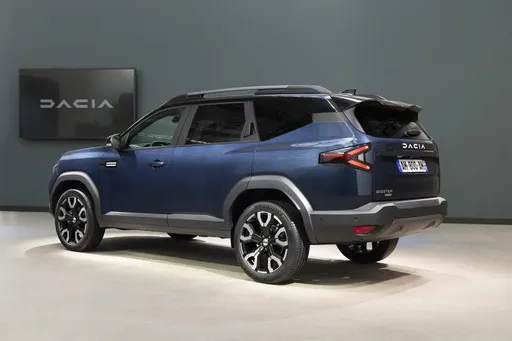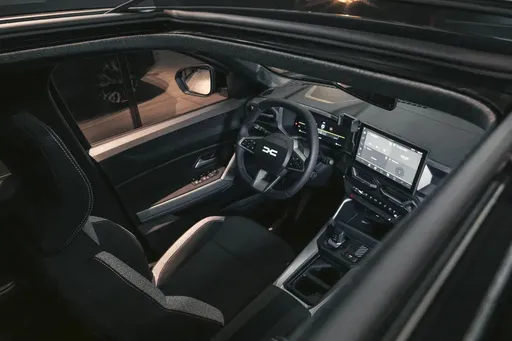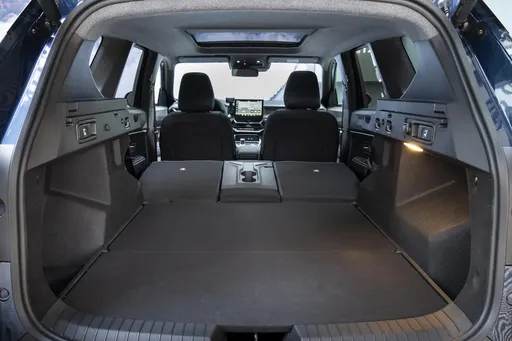Dacia Bigster vs MG HS/EHS - Differences and prices compared
Costs and Efficiency:
Looking at overall running costs, both models reveal some interesting differences in everyday economy.
Dacia Bigster has a a bit advantage in terms of price – it starts at 20600 £, while the MG HS/EHS costs 24000 £. That’s a price difference of around 3429 £.
Fuel consumption also shows a difference: MG HS/EHS manages with 0.50 L and is therefore decisively more efficient than the Dacia Bigster with 4.70 L. The difference is about 4.20 L per 100 km.
Engine and Performance:
Under the bonnet, it becomes clear which model is tuned for sportiness and which one takes the lead when you hit the accelerator.
When it comes to engine power, the MG HS/EHS has a clearly edge – offering 272 HP compared to 155 HP. That’s roughly 117 HP more horsepower.
In acceleration from 0 to 100 km/h, the MG HS/EHS is decisively quicker – completing the sprint in 6.80 s, while the Dacia Bigster takes 9.70 s. That’s about 2.90 s faster.
In terms of top speed, the MG HS/EHS performs barely noticeable better – reaching 195 km/h, while the Dacia Bigster tops out at 180 km/h. The difference is around 15 km/h.
There’s also a difference in torque: MG HS/EHS pulls noticeable stronger with 350 Nm compared to 230 Nm. That’s about 120 Nm difference.
Space and Everyday Use:
Beyond pure performance, interior space and usability matter most in daily life. This is where you see which car is more practical and versatile.
Seats: offers more seating capacity – vs .
In curb weight, Dacia Bigster is slightly lighter – 1425 kg compared to 1625 kg. The difference is around 200 kg.
In terms of boot space, the Dacia Bigster offers noticeable more room – 667 L compared to 507 L. That’s a difference of about 160 L.
In maximum load capacity, the Dacia Bigster performs noticeable better – up to 1937 L, which is about 453 L more than the MG HS/EHS.
When it comes to payload, Dacia Bigster to a small extent takes the win – 467 kg compared to 400 kg. That’s a difference of about 67 kg.
Who wins the race?
The MG HS/EHS proves to be outperforms in nearly all aspects and therefore becomes our DriveDuel Champion!
MG HS/EHS is the better all-rounder in this comparison.

MG HS/EHS
Costs and Consumption
View detailed analysis
Engine and Performance
View detailed analysis
Dimensions and Body
View detailed analysis
Dacia Bigster
The Bigster is poised to redefine the SUV segment with its bold design and spacious interior, catering to the needs of both families and adventure seekers alike. Emphasizing sustainability and practicality, this model reflects a modern approach to automotive engineering, making it a compelling choice for environmentally conscious drivers. With its striking presence on the road, the Bigster not only captures attention but also embodies a new era of versatile mobility.
details @ Dacia / Renault Group Media
@ Dacia / Renault Group Media
 @ Dacia / Renault Group Media
@ Dacia / Renault Group Media
 @ Dacia / Renault Group Media
@ Dacia / Renault Group Media
 @ Dacia / Renault Group Media
@ Dacia / Renault Group Media
 @ Dacia / Renault Group Media
@ Dacia / Renault Group Media
MG HS/EHS
The MG HS, also known as the EHS in its hybrid variant, is a midsize SUV that combines modern design with a focus on comfort and technology. Its spacious interior offers a premium feel, enhanced by quality materials and an array of advanced features aimed at ensuring a smooth driving experience. Known for its efficiency, the MG HS/EHS delivers an enjoyable ride whether navigating city streets or taking on longer road trips.
details
 @ Dacia / Renault Group Media
@ Dacia / Renault Group Media
|
|
|
|
|
Costs and Consumption |
|
|---|---|
|
Price
20600 - 26600 £
|
Price
24000 - 36000 £
|
|
Consumption L/100km
4.7 - 7.1 L
|
Consumption L/100km
0.5 - 7.6 L
|
|
Consumption kWh/100km
-
|
Consumption kWh/100km
-
|
|
Electric Range
-
|
Electric Range
100 km
|
|
Battery Capacity
-
|
Battery Capacity
-
|
|
co2
106 - 137 g/km
|
co2
14 - 173 g/km
|
|
Fuel tank capacity
50 - 55 L
|
Fuel tank capacity
55 L
|
Dimensions and Body |
|
|---|---|
|
Body Type
SUV
|
Body Type
SUV
|
|
Seats
5
|
Seats
5
|
|
Doors
5
|
Doors
5
|
|
Curb weight
1425 - 1547 kg
|
Curb weight
1625 - 1930 kg
|
|
Trunk capacity
510 - 667 L
|
Trunk capacity
441 - 507 L
|
|
Length
4570 mm
|
Length
4655 - 4670 mm
|
|
Width
1813 mm
|
Width
1890 mm
|
|
Height
1705 mm
|
Height
1663 - 1664 mm
|
|
Max trunk capacity
1813 - 1937 L
|
Max trunk capacity
1291 - 1484 L
|
|
Payload
383 - 467 kg
|
Payload
400 kg
|
Engine and Performance |
|
|---|---|
|
Engine Type
Petrol MHEV, Full Hybrid, LPG
|
Engine Type
Petrol, Plugin Hybrid, Full Hybrid
|
|
Transmission
Manuel, Automatic
|
Transmission
Manuel, Automatic
|
|
Transmission Detail
Manual Gearbox, Automated Manual
|
Transmission Detail
Manual Gearbox, Dual-Clutch Automatic, Automatic Gearbox
|
|
Drive Type
All-Wheel Drive, Front-Wheel Drive
|
Drive Type
Front-Wheel Drive
|
|
Power HP
130 - 155 HP
|
Power HP
170 - 272 HP
|
|
Acceleration 0-100km/h
9.7 - 11.2 s
|
Acceleration 0-100km/h
6.8 - 9.6 s
|
|
Max Speed
180 km/h
|
Max Speed
190 - 195 km/h
|
|
Torque
230 Nm
|
Torque
275 - 350 Nm
|
|
Number of Cylinders
3 - 4
|
Number of Cylinders
4
|
|
Power kW
96 - 115 kW
|
Power kW
125 - 200 kW
|
|
Engine capacity
1199 - 1799 cm3
|
Engine capacity
1496 cm3
|
General |
|
|---|---|
|
Model Year
2025
|
Model Year
2024 - 2025
|
|
CO2 Efficiency Class
E, D, C
|
CO2 Efficiency Class
F, B, D
|
|
Brand
Dacia
|
Brand
MG
|
What drive types are available for the Dacia Bigster?
Available configurations include All-Wheel Drive or Front-Wheel Drive.
The prices and data displayed are estimates based on German list prices and may vary by country. This information is not legally binding.
